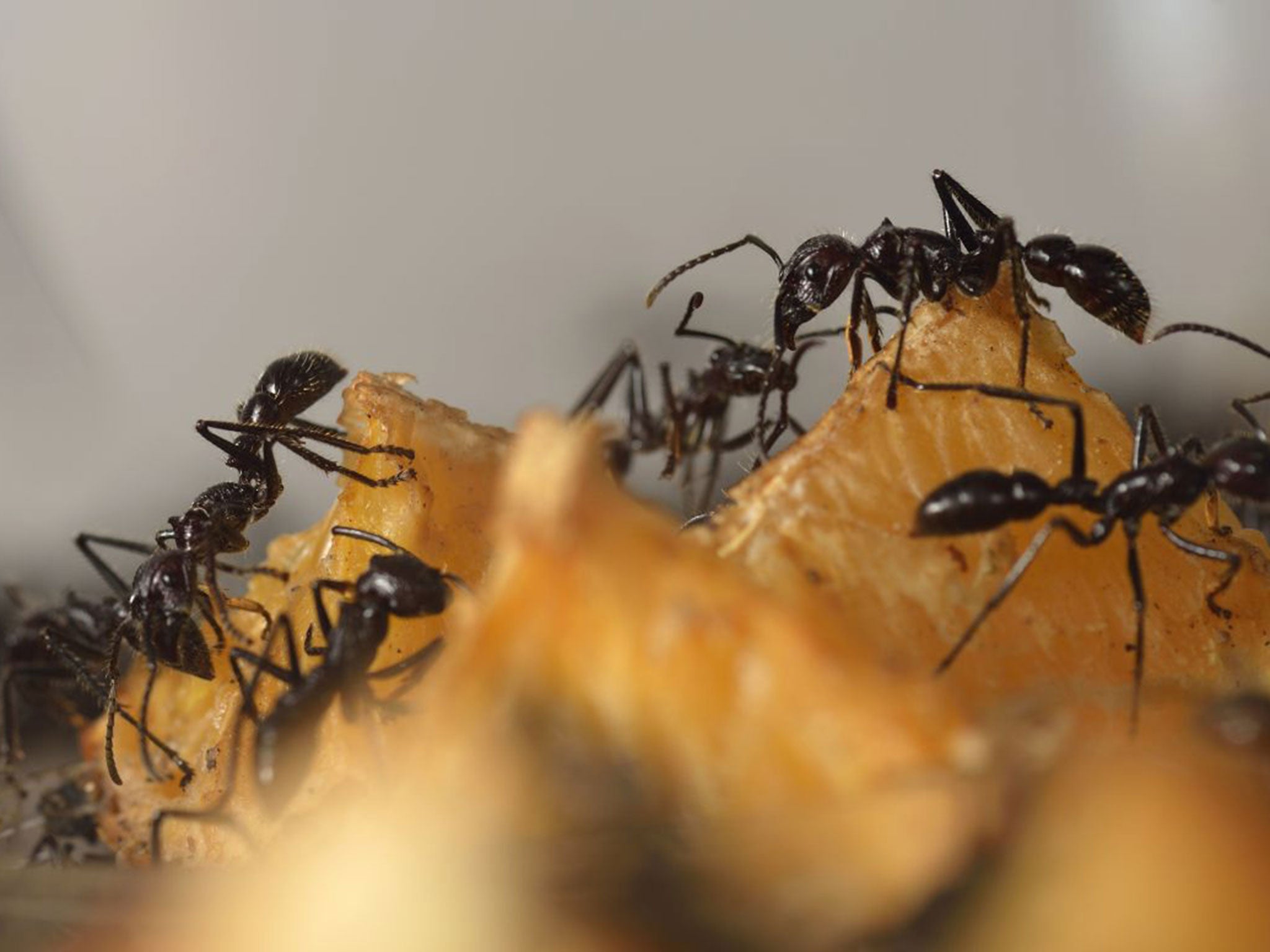Ant groups 'more efficient than Google' in processing data, new study finds
While individual 'scout' ants may seem chaotic in their movements, they are leaving a pheromone trails to allow other ants to follow them to food sources

Your support helps us to tell the story
From reproductive rights to climate change to Big Tech, The Independent is on the ground when the story is developing. Whether it's investigating the financials of Elon Musk's pro-Trump PAC or producing our latest documentary, 'The A Word', which shines a light on the American women fighting for reproductive rights, we know how important it is to parse out the facts from the messaging.
At such a critical moment in US history, we need reporters on the ground. Your donation allows us to keep sending journalists to speak to both sides of the story.
The Independent is trusted by Americans across the entire political spectrum. And unlike many other quality news outlets, we choose not to lock Americans out of our reporting and analysis with paywalls. We believe quality journalism should be available to everyone, paid for by those who can afford it.
Your support makes all the difference.The dedication and stamina of the worker ant, toiling through the summer months and preparing for winter, were celebrated in Aesop’s Fables – in contrast to the lazy, singing grasshopper, unready for the hardships ahead.
Now research shows that ants don’t just flourish because they work hard and will slavishly sacrifice themselves for the collective. Their success is also due to their group ability to process information “far more efficiently than Google” in the daily search for food, according to scientists.
A major behavioural mathematics study, which could also have ramifications for how we understand human behaviour on the internet, used complex computer modelling to reveal how ants bring order to chaos by creating “highly complex networks” to govern their actions.
It found that not only are ants “surprisingly efficient”, but they are able to deploy ingenious navigation strategies to divide themselves between “scout” and “gathering” ants during “complex feed-search movements”.
The joint Chinese-German study, which is published in Proceedings of the National Academy of Sciences, found that while individual “scout” ants may seem “chaotic” in their movements, they are leaving a trail of pheromones to allow following “gathering” ants to refine and shorten their journeys to food sources in the vicinity of the colony.
As this journey is repeated again and again by worker ants carrying their loads, a “self-reinforcing effect of efficiency” creates a shorter trail, saving the colony the time and energy of “continued chaotic foraging”. “While single ants can appear chaotic and random-like, they very quickly become an ordered line of ants crossing the woodland floor in the search for food,” co-author of the study Professor Jurgen Kurths told The Independent.
He added: “That transition between chaos and order is an important mechanism and I’d go so far as to say that the learning strategy involved in that, is more accurate and complex than a Google search. These insects are, without doubt, more efficient than Google in processing information about their surroundings.”
Previous studies had shown that worker ants assigned the most dangerous food-gathering tasks tended to be older, less valuable insects. This suggested that ant colonies were reluctant to risk their younger, more productive members.
However, the new study reveals that older ants are valued for their increased knowledge of their nest’s surroundings.
According to Professor Kurths, the mathematical model used in the study – which converted well-known ant behaviour patterns into equations and algorithms – is equally applicable to other animals that share homing instincts, such as albatrosses.
It could even be used to provide a “new perspective” on behavioural patterns of humans in areas as diverse as transportation systems and how we browse the internet.
The study comes a week after a team from the Georgia Institute of Technology revealed that ants’ skills at building stable tunnels in loose sand could aid in the design of a new generation of search-and-rescue robots.
The team used high-speed cameras to observe how fire ants can use their antennae as extra limbs to catch themselves when they fall, in a development that can be reproduced in the development of fledgling rescue technologies.
Subscribe to Independent Premium to bookmark this article
Want to bookmark your favourite articles and stories to read or reference later? Start your Independent Premium subscription today.
Join our commenting forum
Join thought-provoking conversations, follow other Independent readers and see their replies
Comments